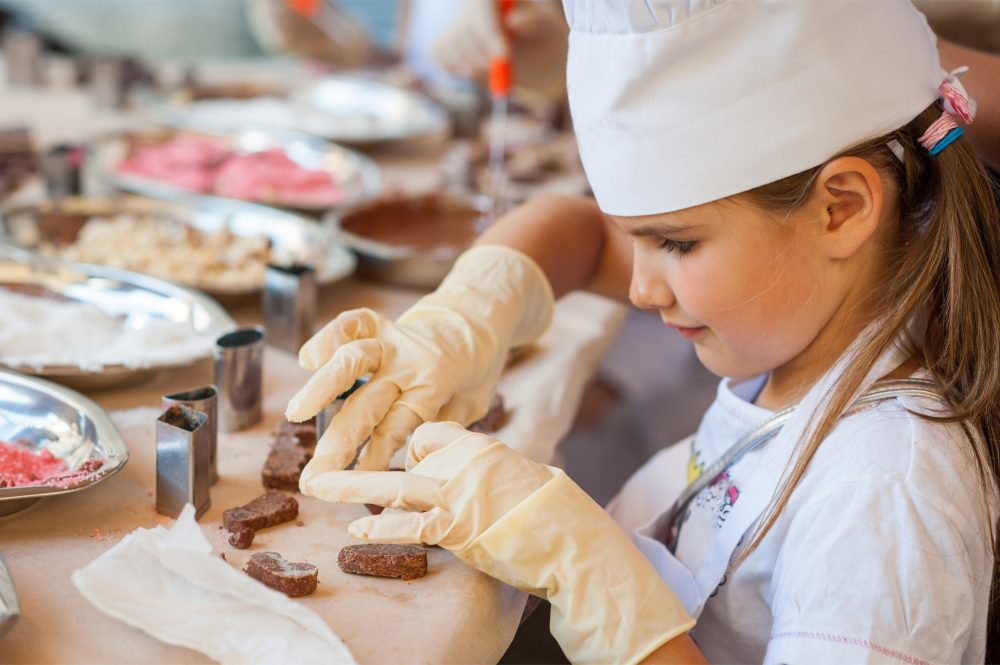If you are a new parent, babysitter, or nursery teacher, you should know that playing is one of the most important ways children learn necessary educational & life skills.
Besides promoting social, emotional, physical, and cognitive skills, play-based learning encourages language development, creative thinking, and problem-solving skills.
So, in today’s blog post, we’ll talk about ten ways you can implement play-based learning at home or school.
1. Get down on the floor.
One of the best ways to encourage play-based learning is to get fully involved with children.
So, get down on the floor and play with your child. This shows them that you value play just as much as they do and are interested in what they are doing.
It also helps them feel comfortable and build trust in a person early in life. Plus, it’s also a great way to bond with your child while having fun!
2. Give children open-ended materials or toys.
Open-ended toys are items that can be used in many different ways. They encourage children to use their imagination and be creative.
Open-ended materials include toys like legos, blocks, balls, clay, play-dough, and paper. Children can design, arrange, line up, or create different shapes and figures using these toys, and channel their creativity in many ways.
Moreover, playing with toys is proven to enhance reading and writing skills in kids, so that’s another thing to keep in mind.
3. Encourage make-believe play.
Make-believe play is when children use their imagination to pretend they are someone or something else.
This kind of play is a great way for children to explore different emotions and situations. It also helps them develop their language skills as they use new words and phrases in their play.
While it could be challenging to keep young children engaged in this game for long, using props such as toys and play dresses can be highly beneficial. This way, they can feel like they are actually in an imaginary situation and have more fun.
4. Get active with gross motor play.
Gross motor play is any activity that uses large muscles, such as running, jumping, and climbing.
This type of play is important for developing coordination, balance, and strength. It’s also a great way to get some energy out!
There are different fun gross motor play activities that you can try with children to promote physical literacy and long-lasting health.
5. Practice turn-taking and sharing.
Sharing and turn-taking are important social skills that children need to learn. And, what better way to learn them than through play?
You could try different games that encourage sharing and turn-taking, such as Zingo, Candy Land, or even simple card games.
These games help children develop patience and social skills, and are an excellent way to teach them about cooperation and working together.
6. Mix up music and movement.
Music and movement activities are great for children of all ages, especially 2 to 5-year-olds.
You could try different musical games such as dancing, Freeze Dance, or musical chairs. These games are a fun way to mix music and movement for kids.
While coordinated movements help develop motor skills, improve coordination, and promote creative expressions, music alone can benefit a child’s brain development.
Moreover, these games are fun, and the lyrics can help promote language development in kids.
7. Encourage cognitive development games.
Cognitive development games are a great way to promote critical thinking and problem-solving skills.
They help children understand concepts such as numbers, shapes, and colours. They also promote memory and concentration.
Examples of cognitive development games include Simon Says, I Spy, or even simple puzzles.
8. Foster creativity through art.
Art is a great way to encourage creativity and self-expression. It also helps children develop fine motor skills.
There are many different ways to do art activities with children. You could try painting, drawing, clay modelling, or even simple collages.
The important thing is to let them explore and be creative.
9. Try “Nature Play.”
Nature play is any activity in nature, such as hiking, playing in the park, or exploring the backyard.
This is a great way to encourage physical activity and help children explore the world around us.
It also helps children develop an appreciation for nature while promoting creativity and imagination.
10. Promote outdoor play.
Outdoor play is important for children’s physical and mental well-being. It helps them develop large muscles, get some fresh air, and explore the world around them. Plus, it’s a great way to burn off some extra energy!
There are endless possibilities for outdoor play. You could try activities like playing in the park, going on a nature walk, or even riding bikes.
So there you have it — 10 ways to encourage play-based learning. To learn more about play-based learning and how to make it work you can find out more here. Most of these ideas can be easily implemented at home or in the classroom. Good luck and don’t forget to have fun!









